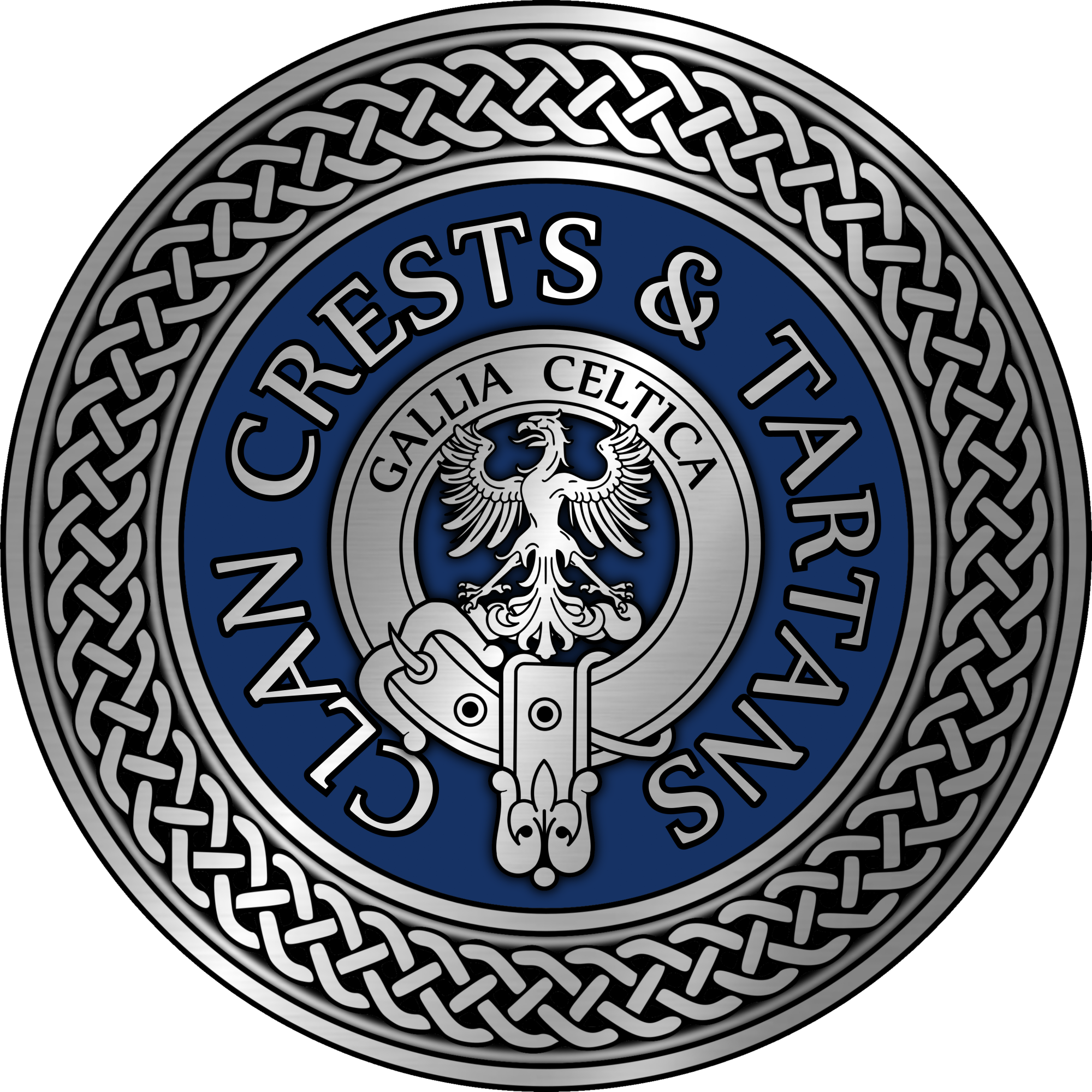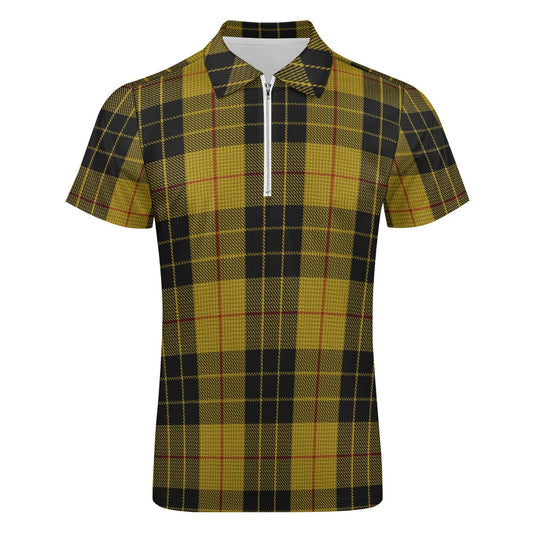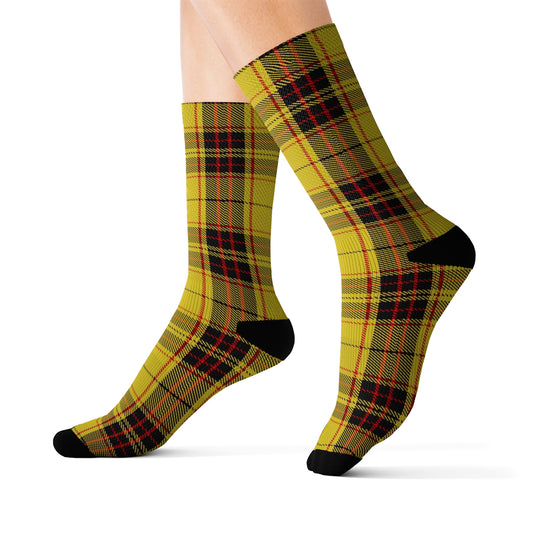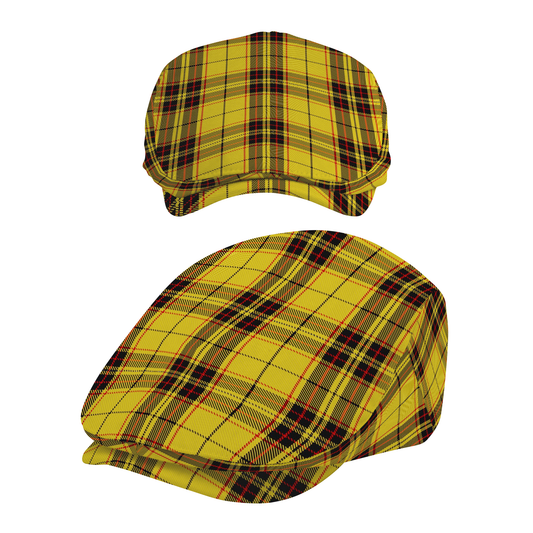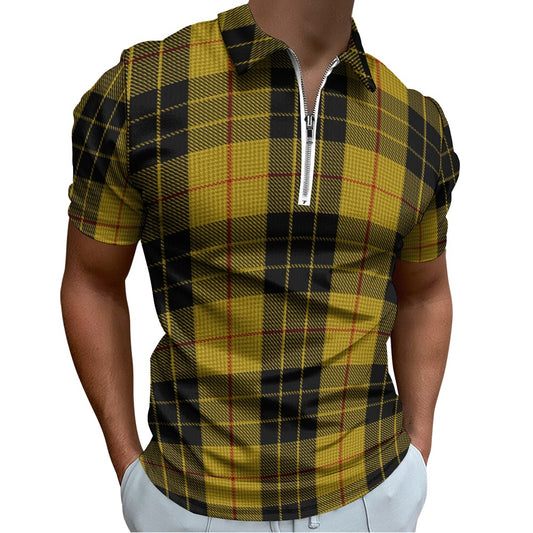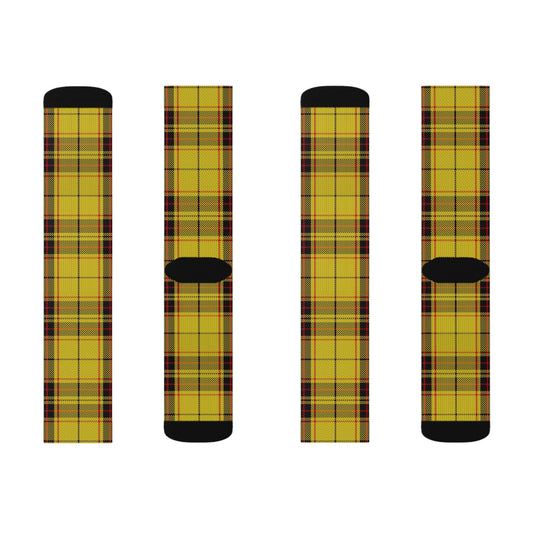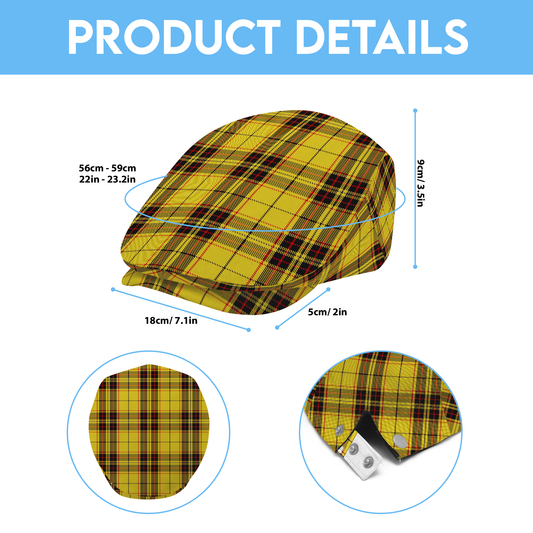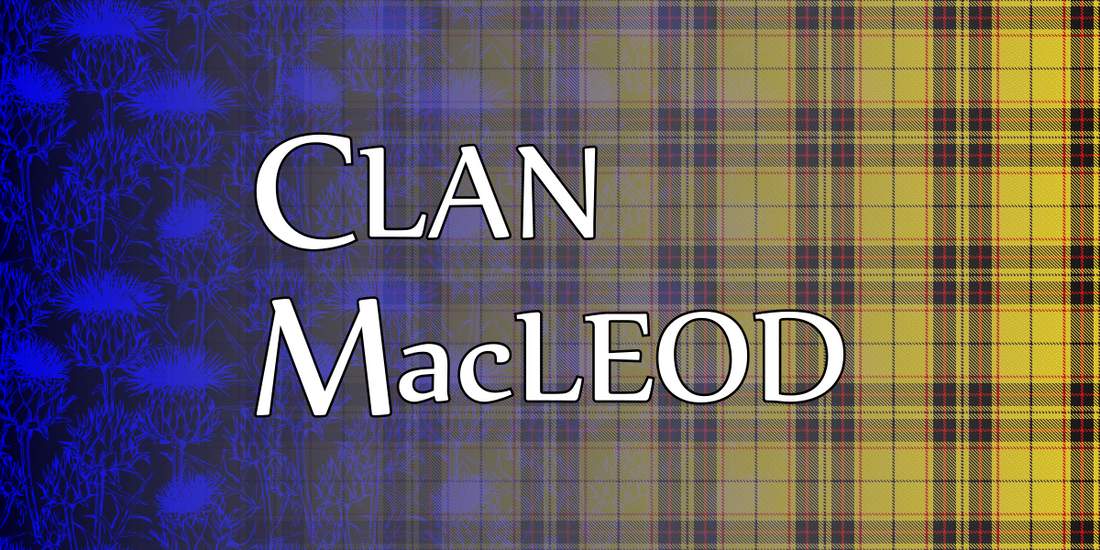

Scots Gaelic: Clann Mac Leòid
Clan MacLeod is a Highland Scottish clan associated with the Isle of Skye. There are two main branches of the clan: the MacLeods of Harris and Dunvegan, are known in Gaelic as Sìol Tormoid ("seed of Tormod"); the MacLeods of Lewis and Raasay, are known in Gaelic as Sìol Torcaill ("seed of Torcall"). Both branches claim descent from Leòd, who lived in the 13th century.
Profile
Crest: A bull's head cabossed sable, horned Or, between two flags gules, staved at the first.
Motto: Hold fast
District: Inner Hebrides, Outer Hebrides, Sutherland
Plant badge: Juniper
Chief: Hugh Magnus MacLeod of MacLeod, 30th Hereditary Chief Clan MacLeod
Seat: Dunvegan castle.
Clan Relationships
Branches
MacLeod of MacLeod (chiefs)
MacLeod of Lewis
Septs
Beaton, Betha, Bethune, Beton, Harald, Haraldson, Harold, Harrell, Harrold, Herrald, MacHarold, MacRalte, MacRaild, Andie, MacAndie, McCaskill, McCaskie, MacHandie, MacKande, MacKandy, Makcandy, MacCaig, MacCoig, MacCowig, MacCrivag, MacCuaig, MacKaig, MacQuigg, MacAlear, MacClewer, McClure, MacClure, MacLeur, MacLewer, MacLewis, Lewis, MacLur, MacLure, Clure, Cluer, Clewer, Cremmon, Crimmon, Griman, Grimman, Grimmond, MacCrimmon, MacCrummen, MacGrimman, MacGrymmen, MacRimmon, MacKilliam, MacKullie, MacWilliam, MacWilliams, MacWillie, MacWylie, McCullie, Williamson, Norman, Normand, Norris, Norval, Norwell, Tormud.
Allied Clans
Maclean, Campbell, Chattan
Rival Clans
MacDonald of Sleat, Mackinnon, Matheson
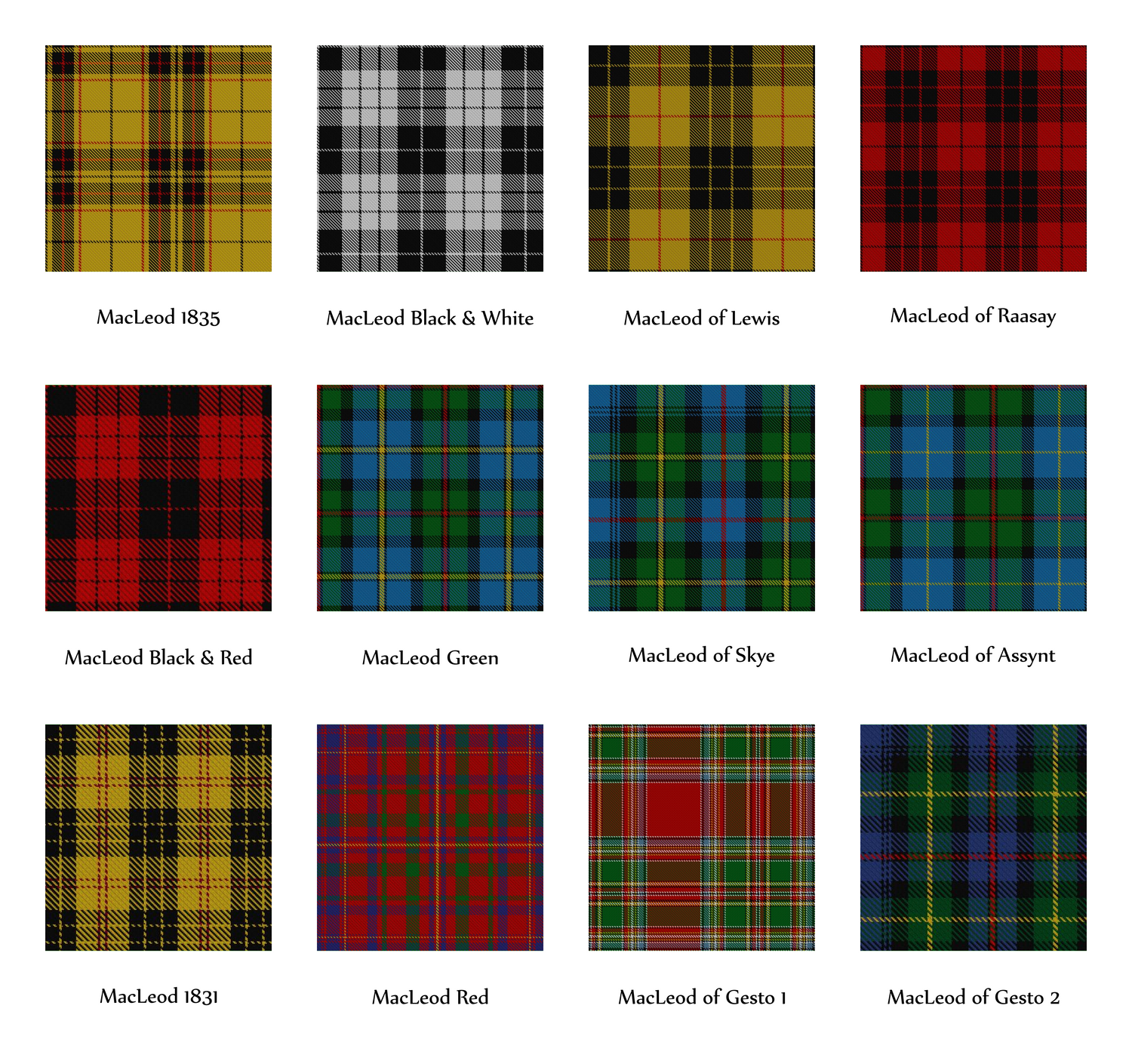
Clan Tartans
Shop MacLeod TartansClan History
The surname MacLeod means 'son of Leod'. The name Leod is an Anglicization of the Scottish Gaelic name Leòd, which is thought to have been derived from the Old Norse. Clann means "children of the family, offspring, descendants, clan", while mhic is the genitive of mac, the Gaelic for "son", and Leòid is the genitive of Leòd. The whole phrase Clan McLeod therefore means "The children/ offspring/ descendants of the son of Leod".
The Clan MacLeod of Lewis claims its descent from Leod, who according to MacLeod tradition was a younger son of Olaf the Black, King of Mann (r.1229–1237). However, articles have been published in the Clan MacLeod magazine which suggest an alternative genealogy for Leod, one in which he was not son of Olaf, but a 3rd cousin (some removed) from Magnus the last King of Mann. In these alternative genealogies, using the genealogy of Christina MacLeod, great granddaughter of Leod, who married Hector Reaganach (McLean/McLaine). These articles suggest that the relationship to the Kings of Mann was through a female line, that of Helga of the beautiful hair. The dating of Christina's genealogy and the ability to line it up with known historical facts lend a great deal of authenticity to the claims of the authors.
MacLeod tradition is that Leod, who had possession of Harris and part of Skye, married a daughter of the Norse seneschal of Skye, MacArailt or Harold's son who held Dunvegan and much of Skye. Tradition stated that Leod's two sons, Tormod and Torquil, founded the two main branches of the Clan MacLeod, Siol Tormod and Siol Torquil. Torquil was actually a grandson of Tormod; Torquil's descendants held the lands of the Isle of Lewis until the early seventeenth century when the Mackenzies successfully overthrew the Lewismen, partly with the aid of the Morrisons, and the MacLeods of Harris (Siol Tormod). Younger branches of Siol Torquil held the mainland lands of Assynt and Cadboll longer, and the Isle of Raasay until 1846. Siol Tormod held Harris and Glenelg on the mainland, and also the lands of Dunvegan on the Isle of Skye.
Leod, according to tradition, died around 1280 and was buried on the holy island of Iona, where six successive chiefs of the clan found a last resting-place after him.
14th Century
Tormod, son of Leod, does not appear in contemporary records; though according to MacLeod tradition preserved in the 19th century Bannatyne manuscript, he was a noted soldier of his era and was present at the Battle of Bannockburn. Tormod's son and successor, Malcolm, is the first of the clan to appear in contemporary record when both he and his kinsman, Torquil, are recorded as "Malcolme, son to Tormode M'Cloyde", and "Torkyll M'Cloyd", in a royal charter dating to about 1343, during the reign of David II (r. 1329–1371). Malcolm was succeeded by his eldest child, Iain Ciar, as fourth chief of the clan. R.C. MacLeod dated this event to about 1330. Iain Ciar appears in MacLeod tradition as the most tyrannical chief of the clan; his wife is also said to have been just as cruel as he. Clan tradition states that he was wounded in an ambush on Harris, and soon after died from these wounds at the church at Rodel. R.C. MacLeod dated his death to 1392. Tradition has it that the Lord of the Isles made another attack on Skye in 1395, but Iain's grandson William MacLeod met the MacDonalds at Sligachan (Sligichen) and drove them back to Loch Eynort (Ainort). There they found that their galleys had been moved offshore by the MacAskills, and every invader was killed. The spoils were divided at Creag an Fheannaidh ('Rock of the Flaying') or Creggan ni feavigh ('Rock of the Spoil'), sometimes identified with the Bloody Stone in Harta Corrie.
15th Century Clan Conflicts
The Battle of Harlaw was fought in 1411 where the MacLeods fought as Highlanders in support of Domhnall of Islay, Lord of the Isles, chief of Clan Donald.
The Battle of Bloody Bay was fought in 1481 where the Clan MacLeod supported John of Islay, Earl of Ross, chief of Clan Donald against his bastard son Angus Og Macdonald. William Dubh MacLeod, chief of Clan MacLeod was killed in the battle.
MacLeod Collection
-
Clan MacLeod Tartan Short Sleeve Polo Shirt
Regular price $54.00 AUDRegular priceUnit price per -
Clan MacLeod Tartan Socks
Regular price $24.00 AUDRegular priceUnit price per -
Clan MacLeod of Lewis Tartan Flat Cap
Regular price $77.00 AUDRegular priceUnit price per$77.00 AUDSale price $77.00 AUD -
Clan MacLeod Tartan Flat Cap
Regular price $77.00 AUDRegular priceUnit price per$77.00 AUDSale price $77.00 AUD
16th Century Clan Conflicts
During the 16th century the Clan MacLeod feuded heavily with the Clan Macdonald of Sleat.
In 1588 William MacLeod of Dunvegan, the 13th chief, bound himself and his heirs in a bond of manrent to "assist, maintain, and defend, and concur with Lachlan Mackintosh of Dunachton, Captain and Chief of the Clan Chattan, and his heirs."
17th Century and Civil War
The Battle of Coire Na Creiche in 1601 on Skye saw the MacLeods defeated by Clan MacDonald of Sleat on the northern slopes of the Cuillin hills. In 1608 after a century of feuding which included battles between the MacDonalds, the Clan Mackenzie and Clan MacLean, all of the relevant Chiefs were called to a Lee lr meeting with Lord Ochiltree who was the King's representative. Here they discussed the future Royal intentions for governing the Isles. The Chiefs did not agree with the King and were all thrown into prison. Donald the Chief of the Clan MacDonald of Sleat was incarcerated in the Blackness Castle. His release was granted when he at last submitted to the King. Donald died in 1616 and then Donald Gorm Org MacDonald, 9th Chief, 1st Baronet of Sleat, his nephew succeeded as the chief and became the first Baronet of Sleat. Clan MacDonald of Sleat continues to hold title to Trotternish and Sleat on Skye from that day until the present.
During the Civil War, after the Battle of Carbisdale in 1650 the defeated James Graham, 1st Marquess of Montrose surrendered himself to Neil MacLeod of Assynt at Ardvreck Castle. MacLeod' wife, Christine Munro, tricked Montrose into the castle dungeon and sent for troops of the Covenanter Government, and as a result Montrose was captured and executed.
During the Civil War as many as 500 MacLeods fought as royalists at the Battle of Worcester in 1651.
18th Century and Jacobite Risings
The MacLeods having supported the Jacobite rising of 1715, General Wade's report on the Highlands in 1724, estimated the clan strength at 1,000 men.
During the Jacobite rising of 1745 the chief of the Clan MacLeod, Norman MacLeod of Dunvegan, did not support the Jacobites and instead raised several Independent Highland Companies in support of the Government forces. The chief led 500 men of the MacLeod Independent Highland Companies in support of the Government at the Battle of Inverurie, on 23 December 1745, where they were defeated.
The Macleods of Raasay, a branch of the MacLeods of Lewis, fought at the Battle of Culloden as part of the Glengarry Regiment, in retribution, the MacLeods of Dunvegan, under their chief, Norman MacLeod, burned and pillaged the Island of Raasay, harassing its inhabitants for many weeks in the late summer of 1746. As a result, Norman MacLeod became known as "The Wicked Man". In 1745, MacLeod of Dunvegan was said to have been able to "bring out" 700 men.
19th, 20th and 21st centuries
The eldest son of Norman MacLeod of MacLeod (1812–1895), Norman Magnus (1839–1929), succeeded as the 26th chief. The 26th chief died without male issue. Norman MacLeod of MacLeod's second eldest son, Torquil Olave (1841–1857) had earlier died without issue as well. Norman Magnus MacLeod of MacLeod was, therefore, succeeded by Norman MacLeod of MacLeod's third son, Sir Reginald MacLeod of MacLeod (1847–1935), as the 27th chief of Clan MacLeod. Sir Reginald MacLeod of MacLeod had no sons, but two daughters. Dame Flora MacLeod succeeded her father and was followed by her grandson John MacLeod. In 2007, Hugh Magnus MacLeod became the 30th Chief of the Clan MacLeod. For the following events see Chiefs of Clan MacLeod.
MacLeod Collection
-
Clan MacLeod Tartan Short Sleeve Polo Shirt
Regular price $54.00 AUDRegular priceUnit price per -
Clan MacLeod Tartan Socks
Regular price $24.00 AUDRegular priceUnit price per -
Clan MacLeod of Lewis Tartan Flat Cap
Regular price $77.00 AUDRegular priceUnit price per$77.00 AUDSale price $77.00 AUD -
Clan MacLeod Tartan Flat Cap
Regular price $77.00 AUDRegular priceUnit price per$77.00 AUDSale price $77.00 AUD
